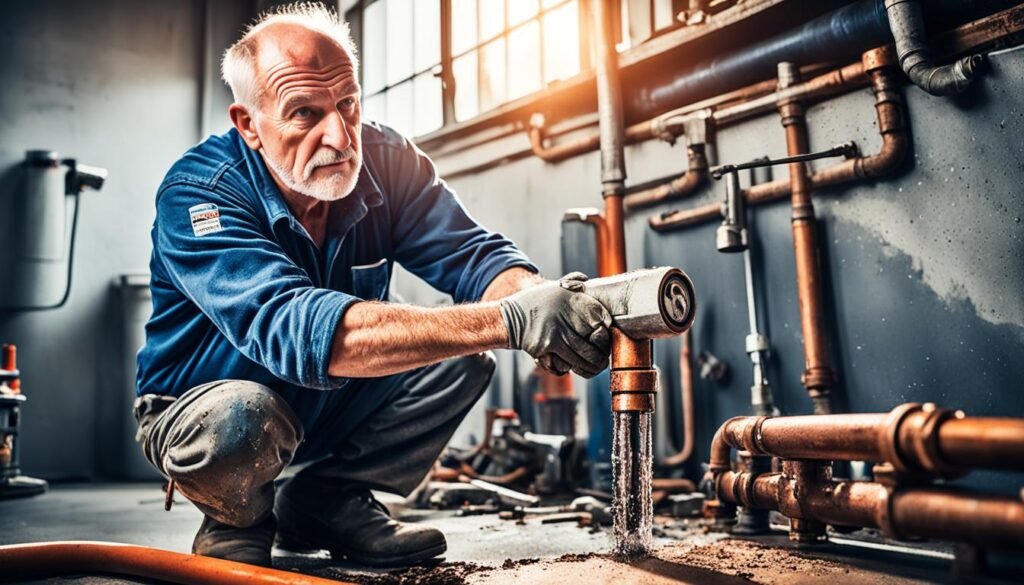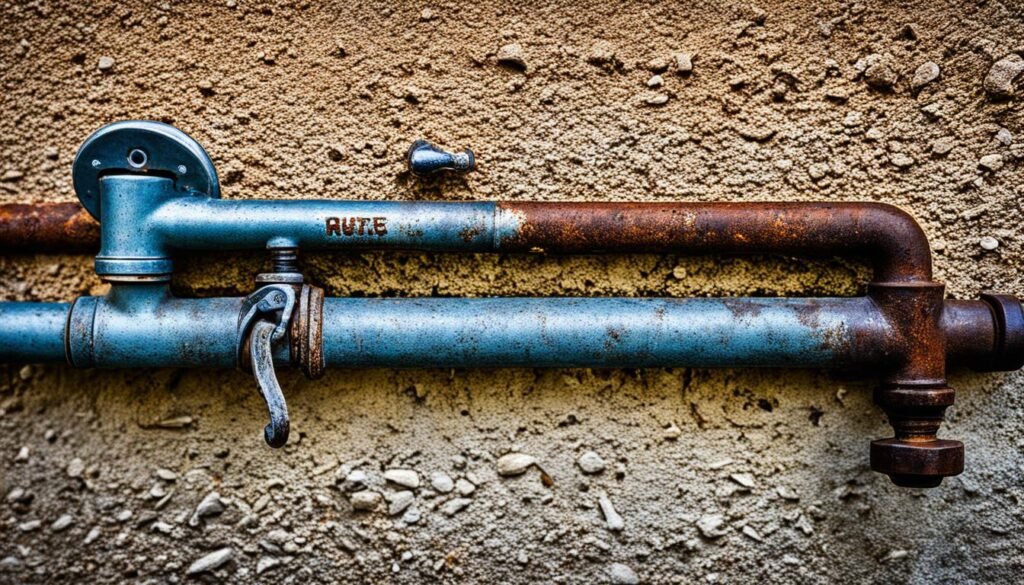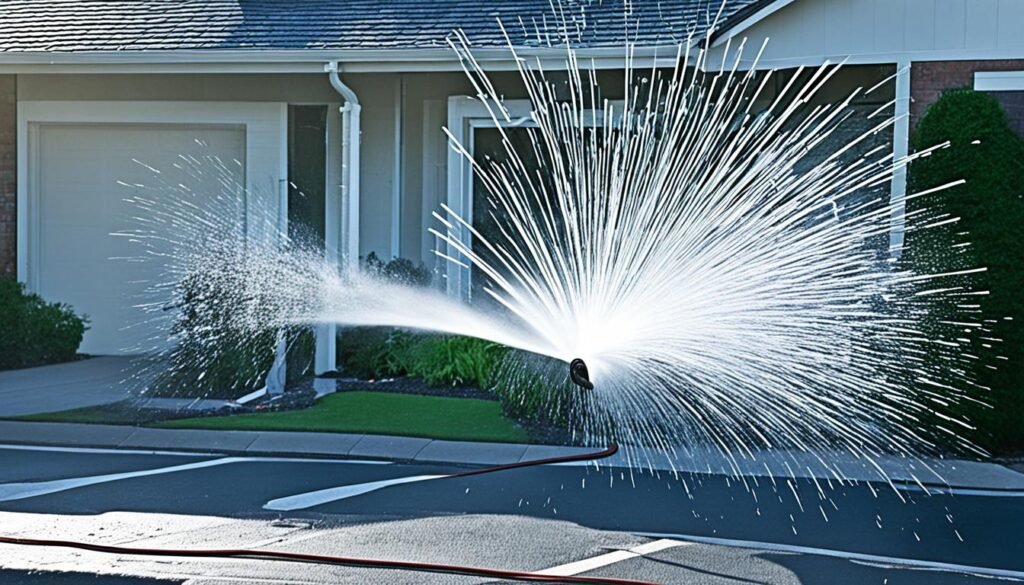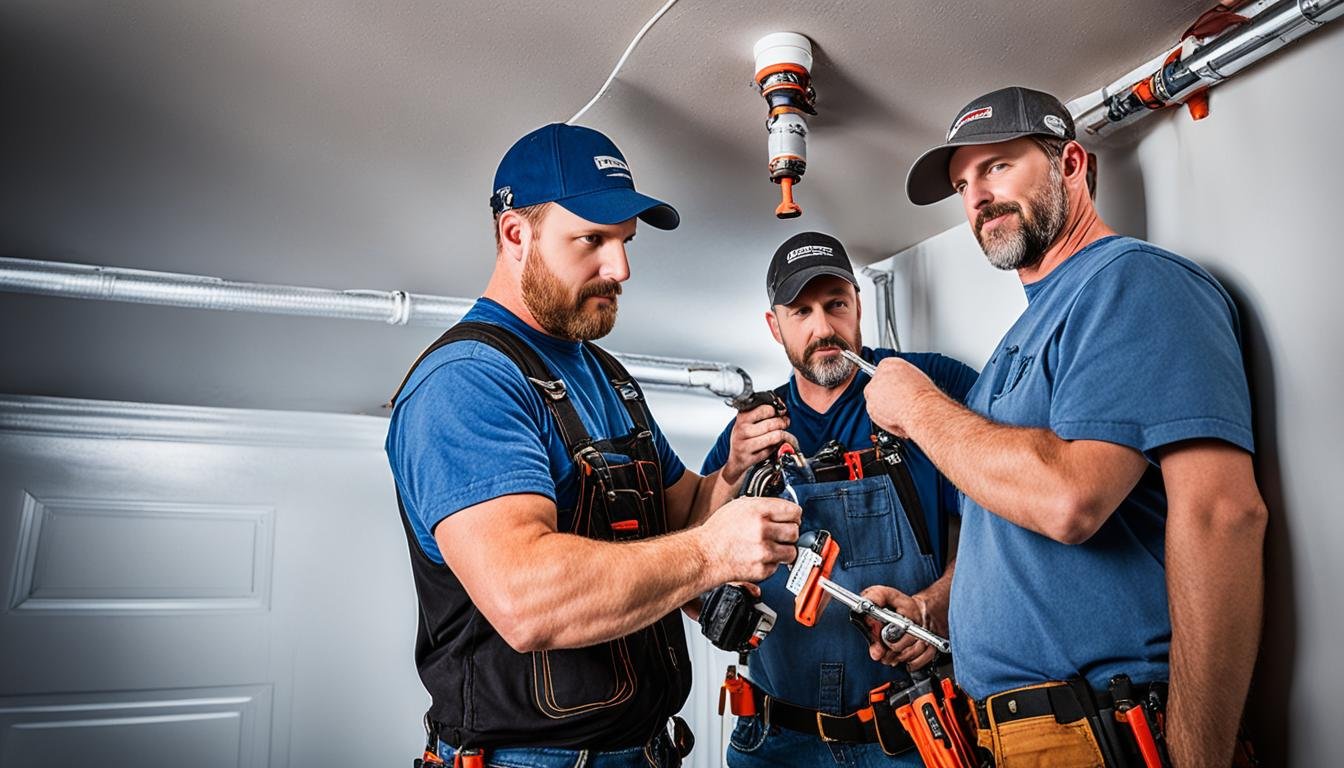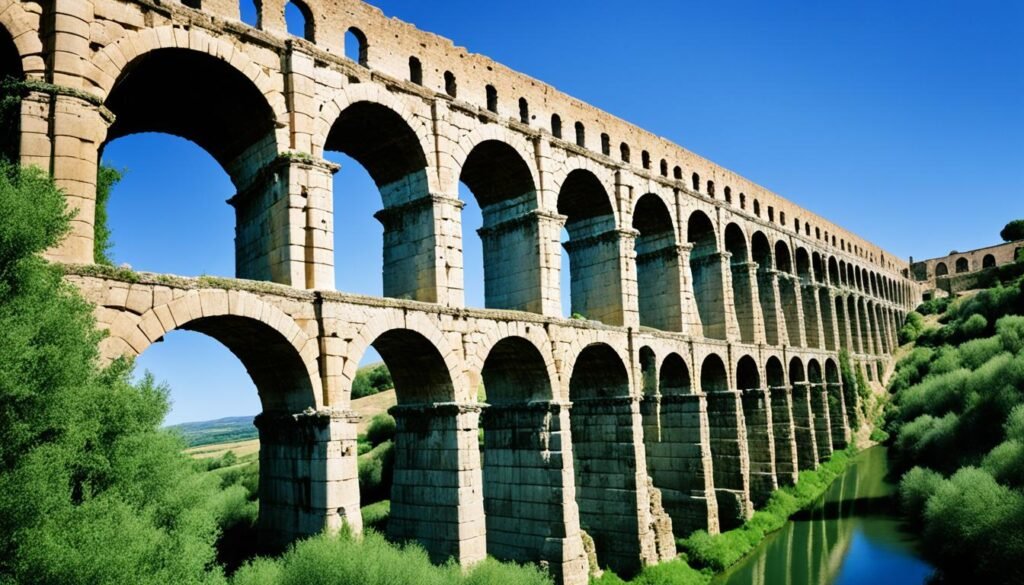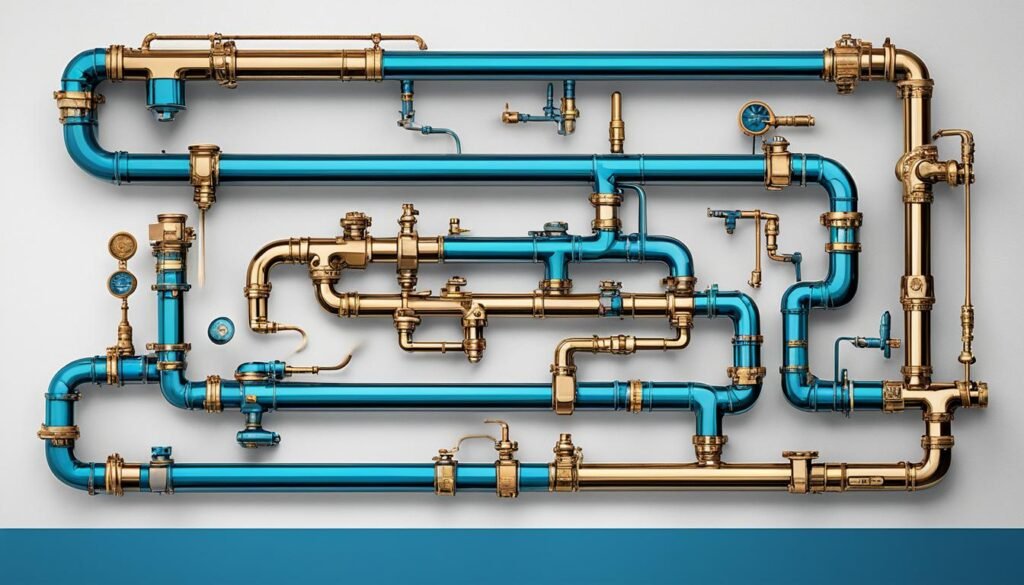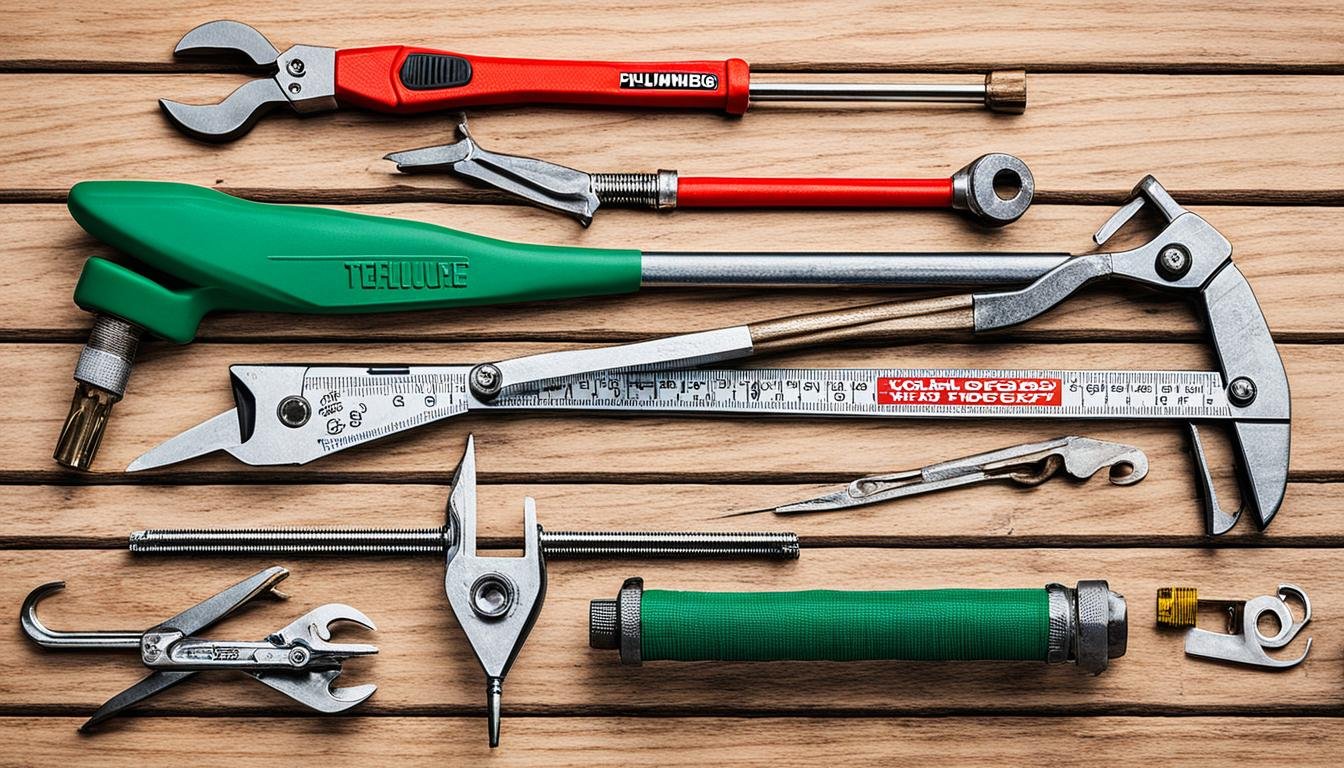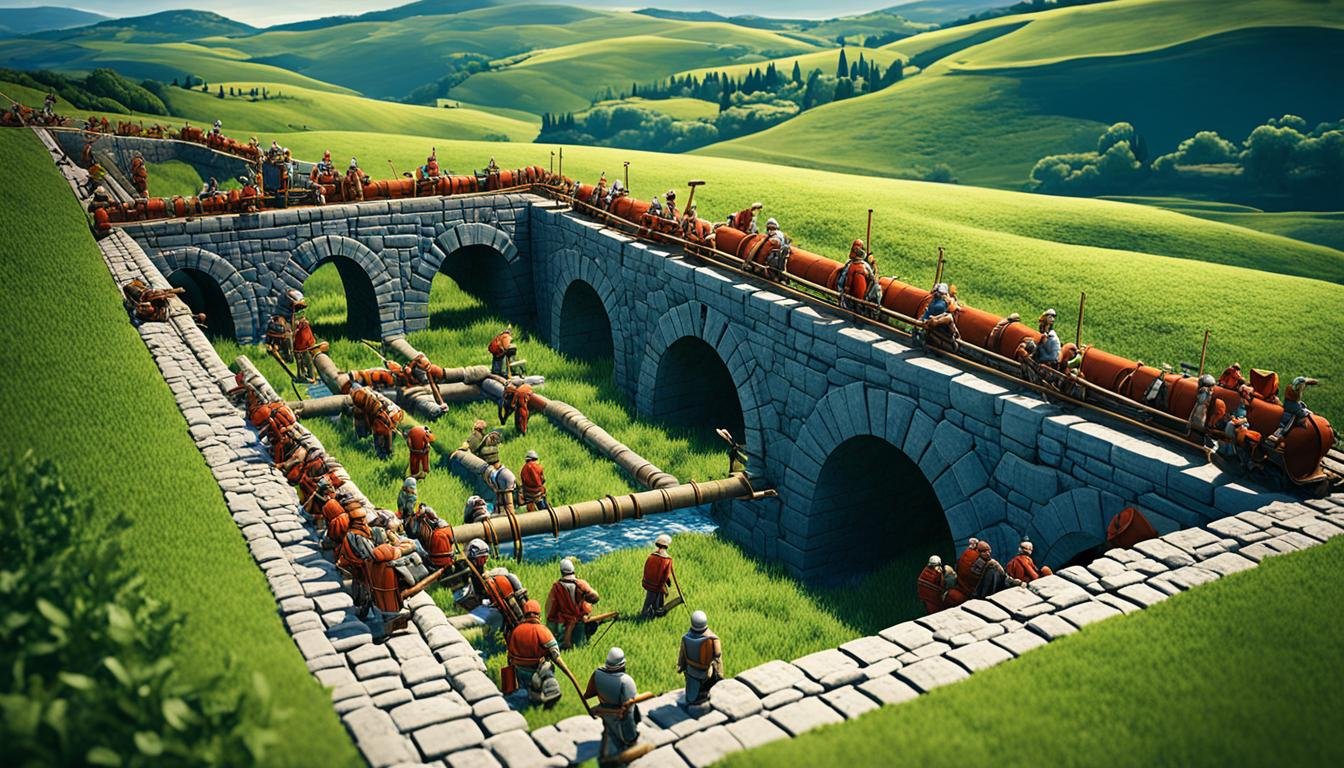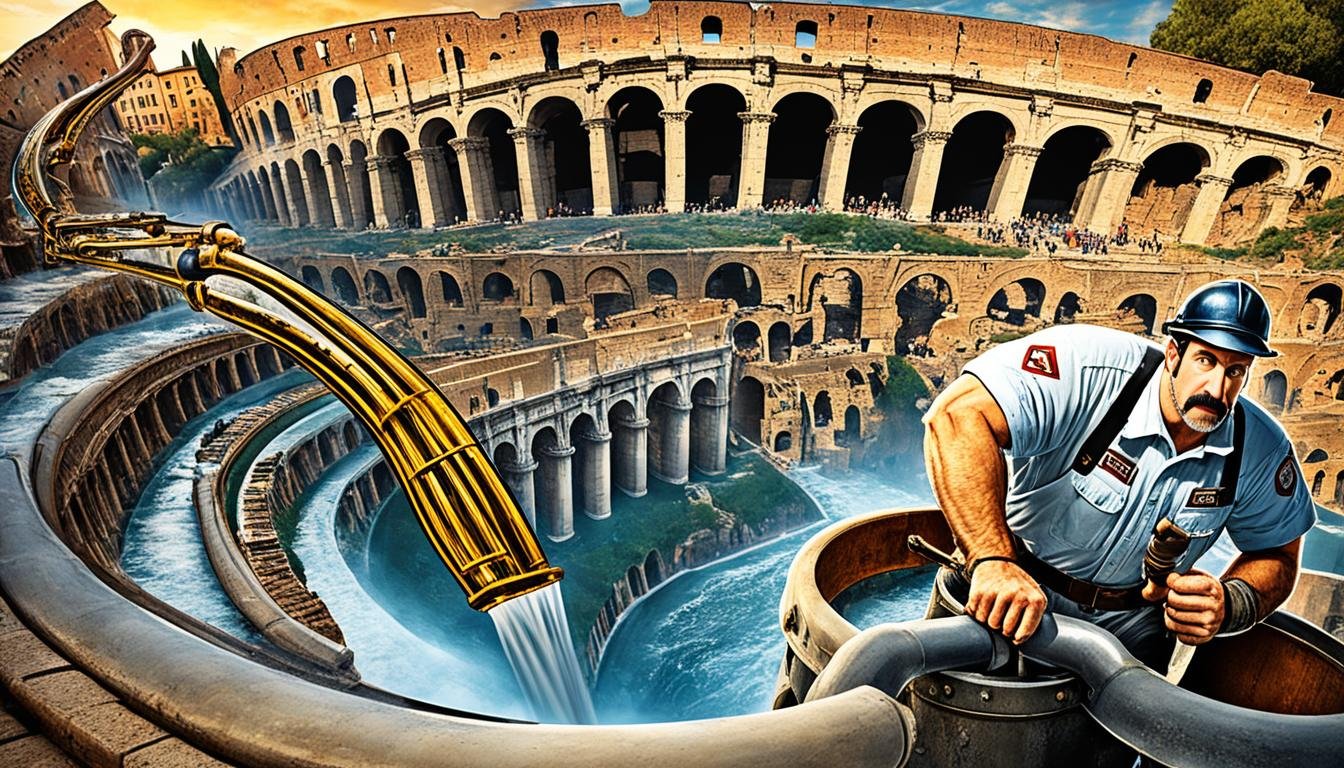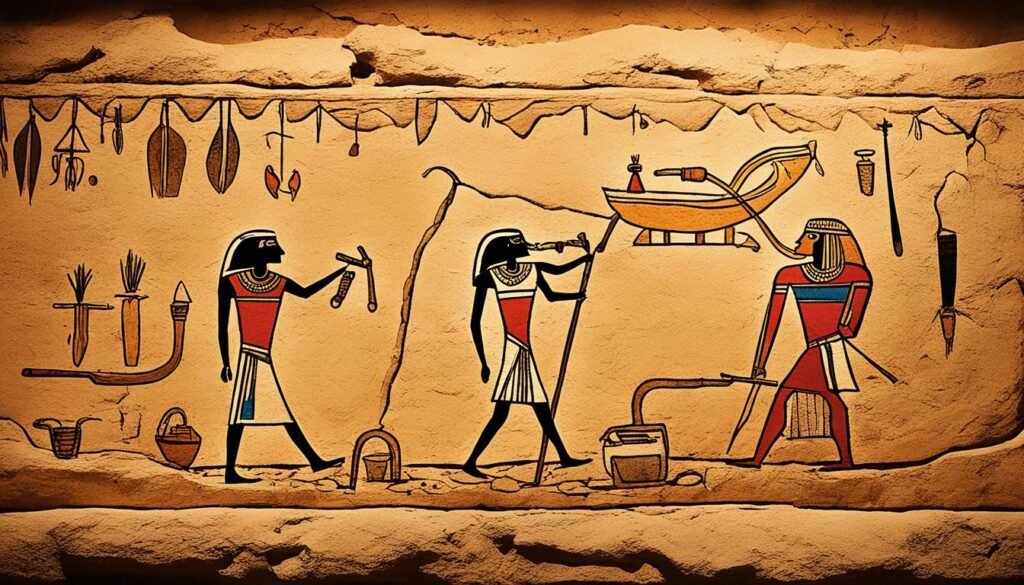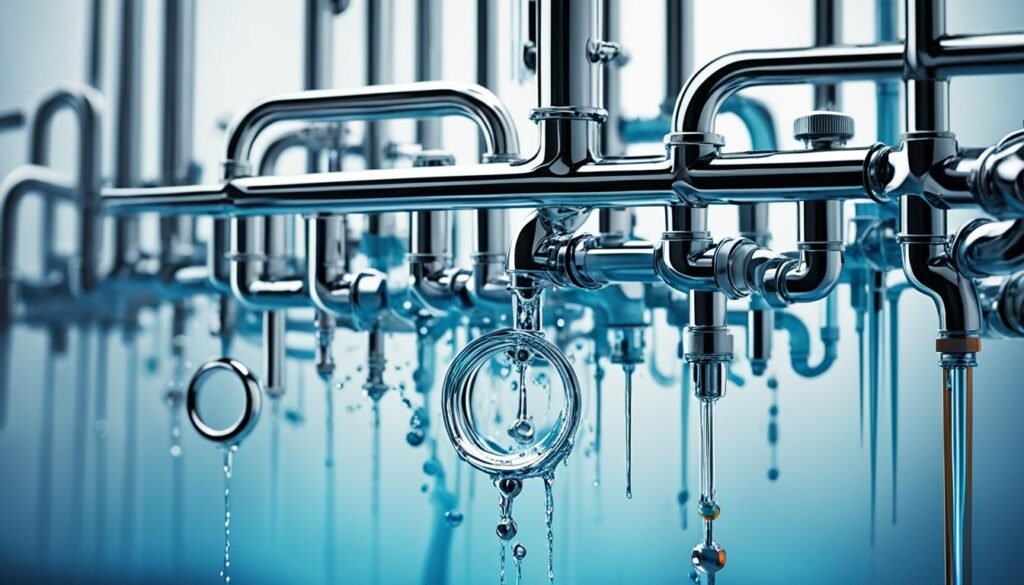Step into the world of plumbing slang, where over 50 key terms make up the industry’s unique talk. There are 8 specific terms for stopping backflow and 9 for talking about plumbing parts. Knowing this special talk helps you chat well with the pros who keep your home’s water and drains in good shape.
If you’ve ever wondered about the 7 kinds of valves, the 6 pieces that join things together, or the 4 terms for heaters and water tanks, this guide is for you. It’ll help you understand the secret language of plumbing. By the end, you’ll be able to talk about pipes, fixtures, and drains like a pro and deal with your home’s plumbing confidently.
Key Takeaways
- Plumbing terminology includes a total of 54 important words for talking about plumbing setups and parts.
- Knowing plumbing slang helps you talk better with plumbers and understand what they’re saying.
- Learning the talk of pipes, fixtures, and drains gives homeowners more control over their plumbing choices.
- Getting familiar with plumbing’s special words makes you ready to talk about plumbing anytime.
- Understanding plumbing slang makes taking care of your home’s plumbing less of a mystery.
Introduction to Plumbing Jargon
The world of plumbing has its own special language that can be hard to understand at first. Words like “nipple” and “ballcock” or “vent stack” and “pressure reducing valve” might sound strange. In this section, we’ll look at some of these words. We’ll explain what they mean. This will help you get a better grip on the unique vocabulary of plumbing.
Commonly Used Plumbing Terms
Plumbing has a lot of specific words. Here are a few you might hear often:
- Nipple: A short, threaded pipe that connects or extends other pipes.
- Ballcock: A fill valve in toilets that adjusts the water level after flushing.
- Vent stack: A vertical pipe allowing air in and out of the plumbing to keep drainage smooth.
- Pressure reducing valve: This lowers water pressure to a safe level.
- Sanitary tee: A fitting in waste lines that stops contamination and ensures good drainage.
- Air admittance valve (AAV): A “cheater valve,” letting air into the system when needed to prevent pressure issues.
- Gray water: Used water from sinks and showers that can be reused for non-drinking activities.
- Black water: Waste from toilets that goes to the sewer for treatment.
- Backflow prevention device: Stops dirty water from going back into clean water supplies.
- Temperature and pressure relief (T&P) valve: A safety device on water heaters that prevents dangerous pressure or heat build-up.
Learning these terms is key to understanding plumbing talk. It’s important for homeowners, contractors, or plumbing pros. Knowing these words helps you take care of your plumbing system and make smart choices about repairs.
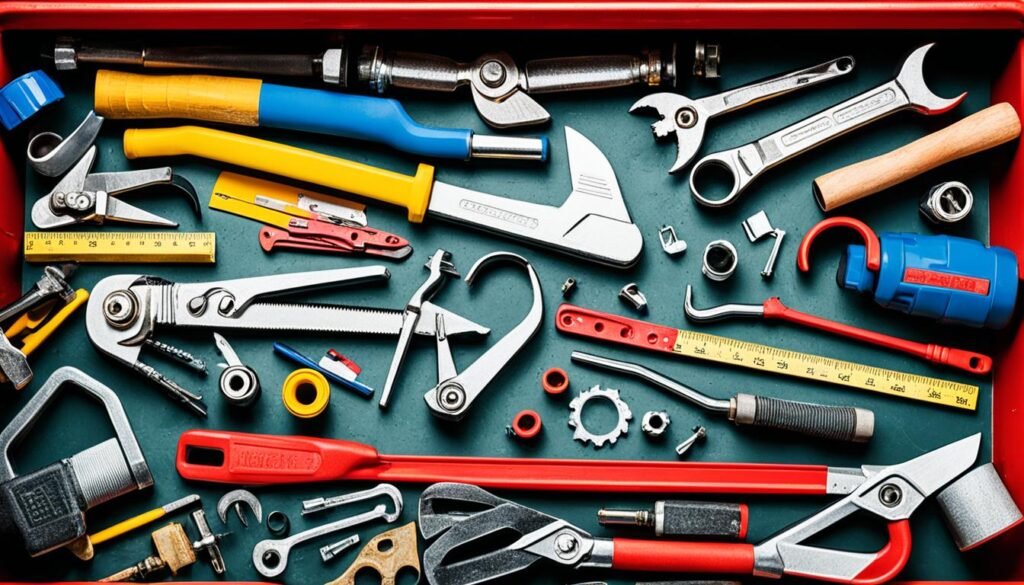
| Plumbing Term | Definition |
|---|---|
| PEX | Cross-linked polyethylene, a flexible pipe material used in new water systems. |
| Plumbing trap | Keeps sewer smells out by sealing drains with water. |
| Sweating | How copper pipes are joined using heat and solder. |
| Water hammer | Loud bangs caused by water changing direction in pipes suddenly. |
| Blow bags/Plumbing bladders | Tools used to push through clogs with air pressure. |
| Plumbing snakes/Augers | Tools for unclogging pipes, flexible and coiled. |
Getting to know these plumbing terms and what they mean helps you talk to plumbers. This is true whether you fix things yourself, hire help, or work in the field. Knowing these words means you can better care for and fix your plumbing.
Plumbing Slang Explained
If you’re a homeowner, knowing plumber lingo can really help. It eases talk about plumbing issues. Plumbers use special words to chat with each other. Learning these can help you talk and work better with your plumber.
We will look at popular plumber slang and what it means. This will guide you to get through the industry’s technical talk. You’ll understand everything from pipe terms to fixture phrases used by plumbers.
Pipe Jargon
Plumbers often name different pipes and fittings uniquely. For example, ABS is a black plastic pipe used in drains and waste lines. It stands for Acrylonitrile Butadiene Styrene. CPVC is black PVC that handles heat in water systems. It’s called Chlorinated Polyvinyl-Chloride. PEX is a flexible and durable plastic used a lot in plumbing work. It’s known as Cross-linked Polyethylene.
- ABS: Black plastic pipe used in drains, vents, and waste lines
- CPVC: Treated black PVC pipe for high-temperature water supply systems
- PEX: Flexible and durable plumbing material
- PVC: White, rigid pipe for drains, waste, or vent pipes
Plumbing Fittings and Fixtures
There are many fitting and fixtures terms too. A 45-Degree Angle joins pipes at 45 degrees. It’s used in drains. A 90-Degree Elbow makes a turn in pipes. In plumbing, a 180-Degree Bend changes pipe direction 180 degrees.
- 45-Degree Angle: Connector for pipe angles
- 90-Degree Elbow: Makes turns in pipes
- 180-Degree Bend: Changes pipe direction in a U shape
Knowing these terms helps you talk to your plumber better. This can make repairs and installs go smoothly. Effective talk is crucial in working with plumbers.
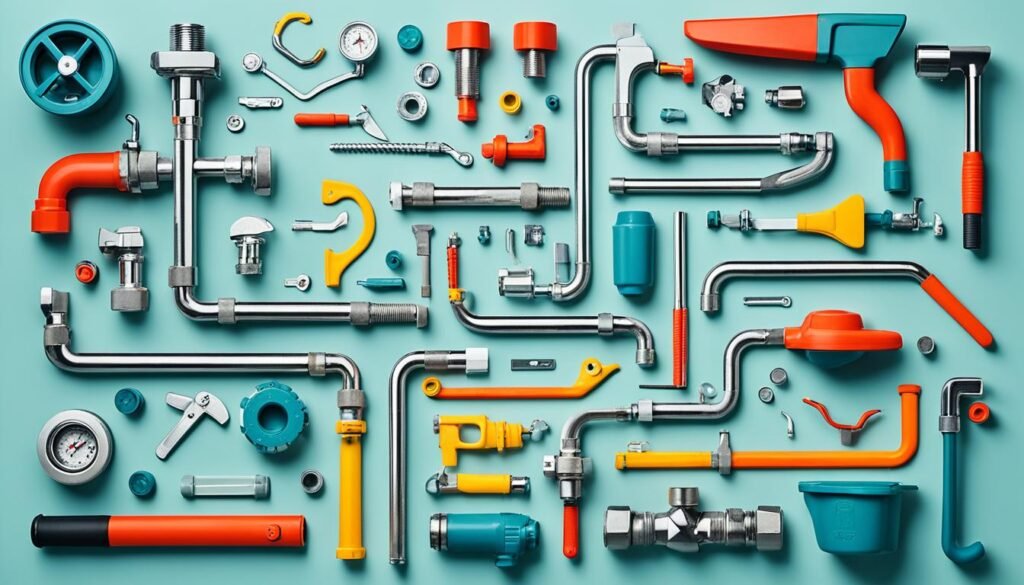
Learning plumbing talk helps you deal with plumbing work better. Clear chat with plumbers is a must. Understanding their jargon will support your home projects well.
Decoding Fixture and Fitting Terminology
In plumbing talk, it’s key to know the difference between fixtures and fittings. Fixtures are the water or disposal systems, like toilets and sinks. Fittings control water flow, such as faucets and shower heads. Learning these terms helps you understand plumbing better. It also lets you follow plumbing advice for your home.
Getting used to pipe lingo and drain talk can feel like a tough task. But, knowing common industry words helps. It lets you talk clearly with plumbers and trade pros. By knowing what a septic euphemism or fixture idiom means, you won’t get lost. You’ll get the right plumbing help.
Use plumber’s slang to understand your home’s plumbing better. With the right words, reading about plumbing is easier. You’ll get through the Dream Home Digest and find what you need from //plumbersinhemetca.com/. This way, your plumbing work will go well.
FAQ
Why is it important for homeowners to understand plumbing terminology?
Learning plumbing terms helps you talk clearly with plumbers. It lets you make smart choices for your home’s pipes. Knowing the words pros use helps you in discussions about your home’s plumbing.
What are some commonly used plumbing terms?
Plumbers use many special words for their work. For example, they might talk about a “nipple” or a “ballcock.” Understanding these terms can be hard at first.
What is the difference between plumbing slang and industry-specific terminology?
Plumbers have slang and special words for talking with each other. This might confuse you, but the more you know, the better you can talk to your plumber. There’s slang, which is casual, and there’s technical talk for pros.
How can understanding the difference between plumbing fixtures and fittings benefit homeowners?
Fixtures are things like sinks and showers that bring in or get rid of water. Fittings include faucets and valves, which manage water flow. Knowing this makes plumbing talks and decisions simpler, giving you more control over your plumbing.
Source Links
- https://www.petro.com/resource-center/plumbing-glossary-plumbing-terms-you-need-to-know-as-a-homeowner
- https://preciseservices.com.au/plumbing-jargon-explained/
- https://www.safeplumbing.org/technical/glossary
- https://www.asse-plumbing.org/media/22305/asse_plumbing_dictionary_6thed.pdf
- https://www.familyhandyman.com/list/plumbing-terms/
- https://www.theplumbersarms.com/index.php/plumbers-corner/plumbers-definitions.html
- https://todayshomeowner.com/plumbing/guides/plumbing-terminology/
- https://www.mcgillplumbing.com/plumbing-glossary/
- https://www.beehiveplumbing.com/plumbing-terminology-101-a-guide-to-the-industrys-lingo/
- https://www.controlbooth.com/threads/plumbers-tape-argument.12658/
- https://www.proprofs.com/quiz-school/story.php?title=glossary-of-terms-4
- https://www.businessballs.com/glossaries-and-terminology/cliches-and-expressions-of-origin/



